1. How did your career as a cartoonist get started in South Korea? Do you remember the exact moment when you discovered your interest in art?
: I debuted in 2002~2003 with the title, “Funny Funny” in Korean comic magazine called, Young Jump. After that from 2007 to 2009, I worked on economy related web comics called, “Tiger Long Tail (aka TLT)” in Naver, which is one of the major Korean web portals. And I’ve been working with European publishers after that. I’ve always wanted to be a comic book artist ever since I was a kid, so I’ve been working towards that goal from early age. I was inspired by the works of Akira Toriyama’s Dr. Slump to become a comic book artist. I thought his imagination was amazing
2. You started in an industry that was already dominated by the Japanese cartoon style and the competition was rather strong. How challenging it was to affirm yourself as a cartoonist? What motivated your confidence to continue on this path?
: That’s right. There really wasn’t much choice other than to read Japanese comics ever since I was little. The position and influence that Japanese comics had not only in Korea but in Asian market was huge. When I debuted as comic book artist, many publishers recommended that I change my style to Japanese style. But many friends and colleagues who knew me told me not to change my style and encouraged me to continue to work on the style which I was good at. I was able to gain some fandom online, and thanks to their support, I was able to continue this path.
3. The main difference between you and other artists is the ability to draw very complicated scenes from your memory, without the aid of any references or guidelines. How do you train your memory to keep alive all your visual vocabulary?
: I agree that there is a difference. I had always worked like that ever since I started drawing when I was a kid. I had developed my habit like so from the start. I had always thought that was the right way. I’ve always drawn from memory; whether it was something I heard from people around me, or the animals I’ve seen from TV, or the scenes I saw from a movie. My drawings were always based on the things I saw or the things I heard, and it was only later that I found out that my method was different from other artists. Looking back, all the things I did for fun was actually a great training for me. I am still using that method, or course, but sometimes I do use reference materials when I need them. Having a good visual memory more than others also helped. I’ve always lived with a ‘If there is something I want to draw, I must draw it no matter when or where I am’ kind of mindset
: I agree that there is a difference. I had always worked like that ever since I started drawing when I was a kid. I had developed my habit like so from the start. I had always thought that was the right way. I’ve always drawn from memory; whether it was something I heard from people around me, or the animals I’ve seen from TV, or the scenes I saw from a movie. My drawings were always based on the things I saw or the things I heard, and it was only later that I found out that my method was different from other artists. Looking back, all the things I did for fun was actually a great training for me. I am still using that method, or course, but sometimes I do use reference materials when I need them. Having a good visual memory more than others also helped. I’ve always lived with a ‘If there is something I want to draw, I must draw it no matter when or where I am’ kind of mindset
4. During the day you are collecting all sort of images and analyze them in order to keep in mind the details that interest you. What qualities or physical features do you look for in a subject or a scene?
: I see the story from the snippet of images. Picture is just an instant from a continuous moments in time. There must be a story that is happening either before or after that moment. And I use my imagination to interpret and create those stories. I quickly recognize and memorize the key elements of the subject matter. Whether it is a person or a thing, people will be able to recognize what I am drawing if I can recreate about 60% of its detail.
: I see the story from the snippet of images. Picture is just an instant from a continuous moments in time. There must be a story that is happening either before or after that moment. And I use my imagination to interpret and create those stories. I quickly recognize and memorize the key elements of the subject matter. Whether it is a person or a thing, people will be able to recognize what I am drawing if I can recreate about 60% of its detail.
5. Looking at your body of work it is impressive how fast your ideas are falling on paper. When you start drawing do you have already a detailed image in your head or is something that develops spontaneously?
: Yes. But it depends on the size and what kind of work is required. For simple images, I have about 80~90% of the image completed in my head. I just move my hands to transfer those ideas. And I work on the smaller details as I draw. When it’s a bigger and more complex story, I have about 60% of the image in my head, including the story and the composition. I place the important images first and then I improvise the rest. The rest just follows naturally while I work on the major parts of the image.
6. You have published 5 Sketchbooks, which gathered nearly 3500 pages of your art; two comics: “SpyGames” and “McCurry, NYC, 9/11”; and a series of 6 comic books entitled TLT- Tiger Long Tail. How does this go hand-in-hand with the evolution of what you’re trying to express and your technique? At this point of your career what would be for you a dream collaboration?
: First of all, Sketch Collection is a collection of work in a chronological order, ever since my 20’s till now. I myself see the changes in my work. In terms of medium, I’ve been doing a lot more work on big paper with the brush pen. And in terms of technique, my lines became cleaner, and I think my level of detail has increased. And unlike my Sketch Collections, the materials I use for comic books depends on whether I will be coloring them myself or not. I’ve used brush pens, markers and watercolors mainly because I’ve only colored Spy Games myself. I’ve only done clean line-works on the other two. I haven’t put much thoughts on collaborations yet, because the work I’m doing with Jean-David Morvan is enough as it is, and I’m grateful for all the opportunities to work with other writers and/or artists time to time. A recent collaboration with Katsuya Terada turned out to be very satisfying, and also working with the sculptor Simon Lee was amazing. There are still more opportunities for such works, but I won’t say anything because nothing is specified yet. I’m sure more opportunity to work with other great artists will come up. As of now, I’m at a point where there are more things that I have to do than things that I want to do. My manager Hyun Jin Kim has been saying for more than a decade that he wishes for me to draw alone in the moon. A collaboration with NASA!!
7. You are teaching manhwa at universities and private schools. What is the most precious advice you give to the new generation of artists?
: I haven’t been teaching lately because of the tight schedules. But I do lectures time to time when I get the chance. I had a motto when I was a student; “If I had eight hours to chop down a tree, I’d spend six hours sharpening my axe.” I tell my students that they should not rush and should prepare. What should they prepare for? The foundational skills. With the advancement in technology, many of us can now cover our weakness using digital tools. But that’s like building a sand castle. You might reach a certain height, but you will not be able to go beyond that. I wish for the students to build up on their traditional skills and reserve on using digital tools the younger they are. And I emphasize that studying the subject matter while understanding them accurately is more important than just drawing a lot. I ask them to experience as much as they can in life, and in drawing I ask them to understand the subject matter perfectly and practice through repetition. That is why studying anatomy is a must when drawing human figure. But if they are too caught up in the rules and theories, their work might become too stiff so I advise them to watch out for that trap.
: I haven’t been teaching lately because of the tight schedules. But I do lectures time to time when I get the chance. I had a motto when I was a student; “If I had eight hours to chop down a tree, I’d spend six hours sharpening my axe.” I tell my students that they should not rush and should prepare. What should they prepare for? The foundational skills. With the advancement in technology, many of us can now cover our weakness using digital tools. But that’s like building a sand castle. You might reach a certain height, but you will not be able to go beyond that. I wish for the students to build up on their traditional skills and reserve on using digital tools the younger they are. And I emphasize that studying the subject matter while understanding them accurately is more important than just drawing a lot. I ask them to experience as much as they can in life, and in drawing I ask them to understand the subject matter perfectly and practice through repetition. That is why studying anatomy is a must when drawing human figure. But if they are too caught up in the rules and theories, their work might become too stiff so I advise them to watch out for that trap.
8. Give us a brief description about the art scene in South Korea? Do you find it a gratifying/stimulating place to work in?
: The art scene in Korea? Let’s see… I don’t really know the entire art scene, but I can tell you about the comic industry since I’m involved in it, and the situation isn’t that great. Korea is very sensitive to trend. So many artists who shows their work in traditional ways or have oeuvres that they continuously show have hard time financially. So they end up compromising to follow the trends of the mainstream. In Korea, if you want to work as a comic book artist, you have to do web comics, or webtoons. Webtoons are consumed quickly due to characteristics of the internet, so the artists do not have enough time to work on them properly, and the quality of their work might even drop depending on the situation. The benefit of working on webtoons is that they are free so anybody can read it, and furthermore, even non-art majors can create their own webtoons and their numbers are increasing. Many young artists who started out as a webtoon artist even become a celebrity when they reach certain popularity. Webtoons took over the market as many publishing companies went under, and they are growing even more. Almost all artists use digital tools to create their webtoons. I am continually working in traditional format within this kind of environment. I am happy as long as there is a space for me to draw. The most comfortable place for me is the studio space that I’ve been using for more than a decade. I sometimes wish I could rest somewhere far off on an island, but I don’t think I’ll get a desire to draw there.
: The art scene in Korea? Let’s see… I don’t really know the entire art scene, but I can tell you about the comic industry since I’m involved in it, and the situation isn’t that great. Korea is very sensitive to trend. So many artists who shows their work in traditional ways or have oeuvres that they continuously show have hard time financially. So they end up compromising to follow the trends of the mainstream. In Korea, if you want to work as a comic book artist, you have to do web comics, or webtoons. Webtoons are consumed quickly due to characteristics of the internet, so the artists do not have enough time to work on them properly, and the quality of their work might even drop depending on the situation. The benefit of working on webtoons is that they are free so anybody can read it, and furthermore, even non-art majors can create their own webtoons and their numbers are increasing. Many young artists who started out as a webtoon artist even become a celebrity when they reach certain popularity. Webtoons took over the market as many publishing companies went under, and they are growing even more. Almost all artists use digital tools to create their webtoons. I am continually working in traditional format within this kind of environment. I am happy as long as there is a space for me to draw. The most comfortable place for me is the studio space that I’ve been using for more than a decade. I sometimes wish I could rest somewhere far off on an island, but I don’t think I’ll get a desire to draw there.
9. Nowadays we are living a world transformation due to all new technologies. How do you perceive the future of art?
: Many people are talking more and more about the development of AI (Artificial Intelligence) such as Alpha-Go and the influence they will have on our future lives. And the advancement in internet and technology will broaden our ways to express ourselves, and eventually it will have direct and indirect influence in the art realm as well. The art world will be shown in many different forms or in the artworks themselves. I myself have experienced VR (Virtual Reality) first hand. It was a very good experience to me as an artist, and I remember that the audience also seem to be having a good time. The films are also awakening our senses even more and I look forward to their advancement. I believe the development of new and diverse ways of expressing and new forms of art paradigm due to advancement in technology will make our lives more diverse and interesting. And after some time, when people are tired of these things, they can always go back to doing things in traditional format. But someone like me would continue to draw traditionally even after 10, 20 years, and I believe there will be other artists who’d do the same.
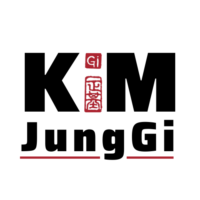
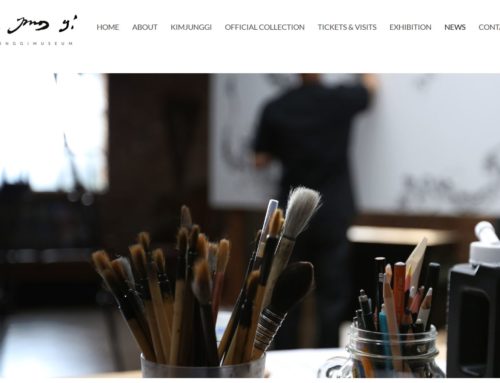
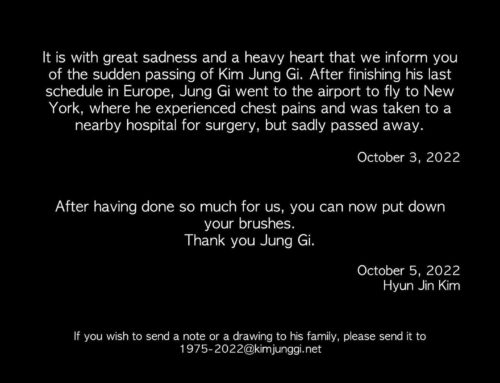
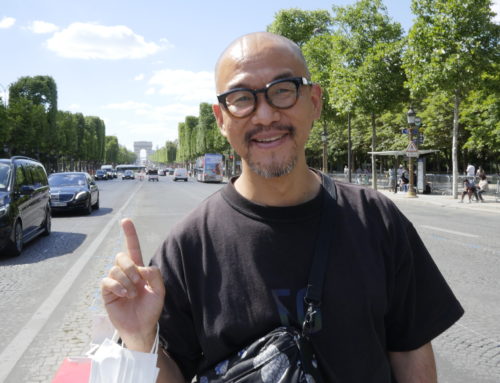
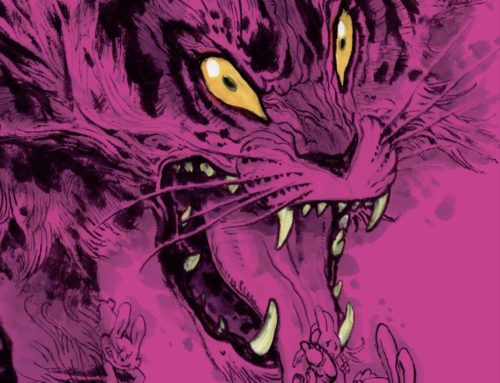
Leave A Comment